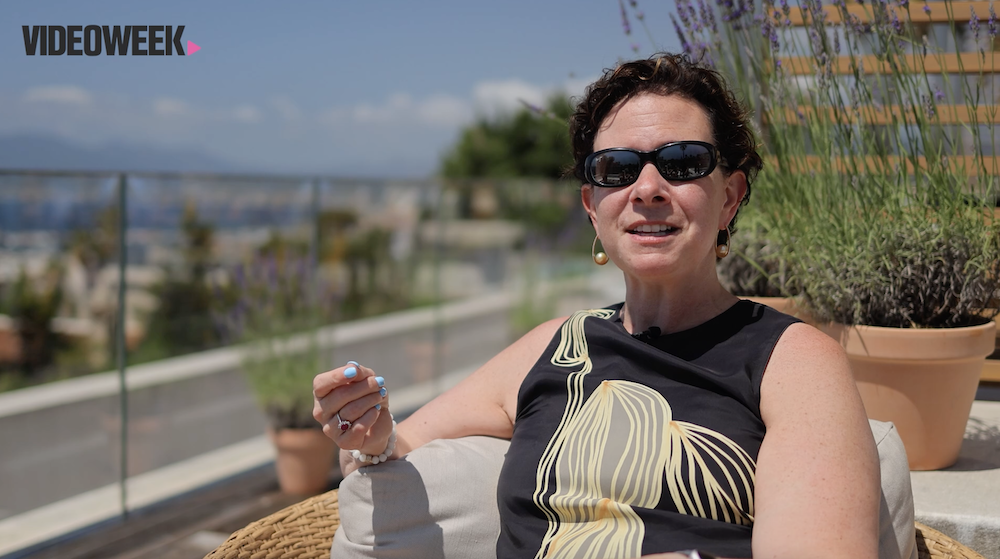All eyes are on retail media in the runup to Cannes, with the channel forecast to outpace linear TV spend by 2026. But with that proliferation comes fragmentation, as more retailers launch their own media offerings to capture a share of those budgets. As a result, agencies are carving out a growing role in facilitating retail media buys. But given the relative nascency of the channel, that role is still being defined, as the major agency groups continue to develop their own retail media units.
In May 2023, WPP-owned GroupM brought its commerce operations under the GroupM Nexus Commerce umbrella, seeking to tie together an increasingly fragmented marketplace for its clients. For Jason Westcott, Global Head of Commerce Solutions at GroupM Nexus, and Chair of the Retail Media Committee at IAB Europe, that means providing an overview of the retail media landscape perhaps unavailable to individual marketing teams.
“It’s not like you’re going to have a shopper marketing team within a brand who can manage up to eight different platforms simultaneously with quite modest budgets, that could be quite tricky,” comments GroupM’s Jason Westcott. “So our immediate application is being able to cover the ground quickly, because a lot has happened in this space in the last five years.”
“No slam dunk for retail media”
Although retail media is still an emerging channel, Westcott notes that it has evolved “a hell of a lot” since the early days, when commerce media was largely limited to sponsored ads on Amazon. The retail giant has evolved into a fuller-funnel proposition with richer insights available to advertisers, while UK retailers have introduced dunnhumby and Nectar360 data into CTV buys on ITVX and Channel 4.
These developments seem quite intuitive given ongoing shifts in consumer habits, including the growth of CTV and the rise of online shopping. And with Google phasing out third-party cookies in Chrome, signal loss on the open web is often cited as a key driver of retail media spending. But Westcott suggests the impact of cookie deprecation on retail media could be overstated, at least at this stage in Google’s ever-expanding timeline.
According to Westcott, most retail media spending is concentrated in sponsored search ads, with Amazon likely to be the chief beneficiary of that spend. “Retail media is still mainly sponsored ads,” he observes. “I don’t feel that people are saying, cookies are going to go anyway so we’re going to use the retailer first-party data based on shopper behaviour, at the moment.”
Of course this first-party data is expected to gain importance once advertisers gain access to those customers. “But until they’re forced to actually make that change, why change now if you’ve still got that option?” remarks Westcott. And even when cookies are phased out, there are other channels available to advertisers where they may feel more comfortable than commerce media.
“I don’t think it’s going to be a slam dunk for retail media,” says Westcott. “I think it’s something that needs to be worked on. If the right sort of tech and buying models can come into place to make retail media more democratised and easier to buy alongside any other programmatic display or video buy, for example, then I feel like the sky’s the limit. But if it continues to be closed, it could be a bit of a limiter.”
Staying agile
One risk is that retailers looking to maximise the value of their first-party data build their commerce media offerings within walled gardens, creating further complications for buyers across those disparate retail media platforms.
“It’s not like programmatic video or display, for example, where you might be able to just use one or two DSPs and cover a lot of ground,” says Westcott. “Whereas you could be spending a quarter of that budget and have double the platforms to use for covering retail media, so that for traders can be quite problematic, because all of them work slightly differently.”
This is again where agencies can play a key role. While some bigger brands would be able to handle retail media in-house, continued fragmentation could prompt smaller advertisers to lean on agency expertise to provide an agile approach to buying across multiple platforms.
For GroupM Nexus, this means planning retail media channels against each other according to the advertiser’s goals. In the US for example, the agency might input Amazon, Walmart and Instacart into its planning tool, alongside a total budget and the number of sales it is looking to drive. The planning tool would then make recommendations based on those parameters. The agency can then activate the campaign, using AI-trained models to automatically optimise spend, and its in-house creative studio to produce assets that meet the different requirements of retail media platforms.
GroupM Nexus also remains agnostic on the tech front, lending further flexibility for advertisers looking to spend on retail media. Westcott notes that the agency has conducted requests for information (RFI) from various vendors and can offer a neutral perspective in advising clients on the tech best suited to their requirements.
“The decision for these things lies with the advertiser,” he says. “That gives them the space they need to do their own deals directly with these companies to get the best commercial terms. We have a lot of information because we’ve gone through a whole RFI process around that. But we absolutely wouldn’t push any tech brand over another, we would only advise.”
Barriers to entry
But friction on the tech side has also been identified as a barrier to investment in the channel. In an IAB Europe survey last year, 63 percent of buyers cited media networks’ lack of integration with other tech as a hindrance to investment. And Westcott says this is particularly applicable for off-site retail media, where retailer data is used to buy inventory outside of the retailer’s own (on-site) platforms.
“That’s probably where there should more flexibility in terms of how advertisers or agencies are able to buy,” comments Westcott. “Certain retailers might just align with one DSP to offer their audience segments for off-site ads. But as an agency or an advertiser, you’re then tied to using that one DSP, and it might not be a DSP that your own team uses or is particularly trained up on.”
The other major barrier highlighted by the IAB Europe survey is a lack of standards in retail media, with 68 percent of buyers concerned about the absence of standardisation when it comes to metrics and reporting.
IAB Europe has formulated retail media standards in response, and in April the Retail Media Committee (which Westcott chairs) published a set of measurement standards covering primary media and attribution metrics, enabling media buyers to compare their investments using a consistent framework.
“That’s one big step in the direction of trying to ensure that there is consistency across all of these metrics,” says Westcott. “If retail media exists in its own little bubble where the metrics don’t match, you’re not able to contextualise that against the rest of what you’ve got going on within that media plan.”
Shifting budgets
That ability to compare retail media activity with other investments will become increasingly important as the channel makes it way onto more media plans, and advertisers seek to understand its role in the media mix. While closed-loop attribution can help measure the channel’s impact on sales, Westcott warns against oversimplifying retail media to purely lower-funnel metrics.
“If you focus on lower-funnel metrics only, you can be quite limited,” he says. “It’s great to convert the audience that you already have engaged, but you’re not going to grow that audience any more. If you just put more budget into lower-funnel tactics, it’s probably not going to work out well in the long run. That mix still needs to be strong. Clearly brand awareness and brand recall are still very important.”
And while the figures around commerce media overtaking linear TV suggest some kind of decline in more traditional media, Westcott again suggests this could be counterintuitive. He argues these forecasts should be taken as sign of consumption shifting to online video and CTV, arguing that retail media investments should be additional to traditional media.
“The way that people consume media has changed, but I think that mix of marketing is always going to be super important,” he says. “Obviously for agencies, traditional media budgets going to digital retail media sounds great, but it’s just taking from one channel and shuffling it into another. Is that going to be the best thing to do long-term? Because you’re going to forego that brand exposure which is still very, very important.”
A more likely pool of spend to migrate to retail media is trade marketing, as retailers increasingly digitise their in-store touchpoints. Marketing budgets spent on coupons, catalogues and in-aisle displays will therefore shift towards digital retail media, suggests Westcott, as retailer inventory becomes integrated, addressable and potentially even programmatic. This presents an opportunity for retail media to grow, according to Westcott, enabling advertisers to build a full customer journey across on-site, off-site and in-store properties.




